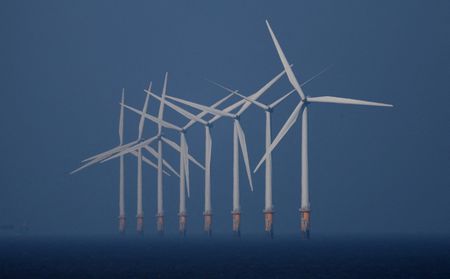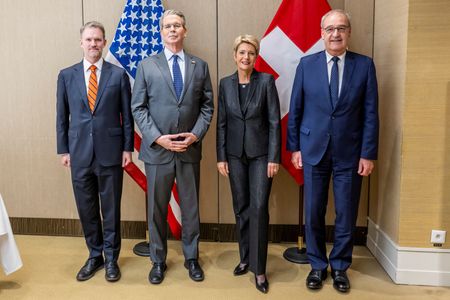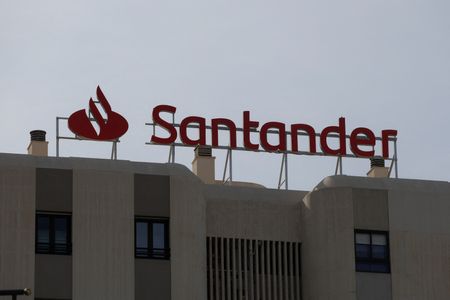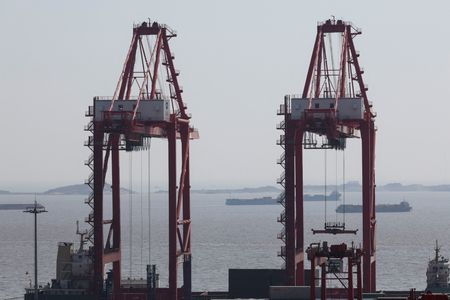LONDON (Reuters) – King Charles III’s Crown Estate, which owns Britain’s seabed, has given the go-ahead to expand high-density wind farms on current seabed leases, seeking a rapid and space-efficient way to raise capacity and support the country’s energy transition.
Seven projects, including RWE’s Rampion 2, and SSE and Equinor’s Dogger Bank D, are set to increase capacity by 4.7 gigawatts under this Capacity Increase Programme.
Britain plans to largely decarbonise its electricity sector by 2030 and wants to increase renewable power, particularly offshore wind, to insulate it against fossil fuel price shocks.
It has a target to have up to 50 GW of clean energy from offshore wind deployed by 2030, up from 15 GW currently.
All seven projects have grid connections and infrastructure that will enable swift deployment, and are within pre-established offshore wind sites, The Crown Estate said in a statement.
“Our purpose is to create lasting and shared prosperity for the nation. Offshore wind enables us to do that as a driver of economic growth through jobs creation and supply chain development,” said Gus Jaspert, managing director, marine, at The Crown Estate.
“Delivering the Capacity Increase Programme is an effective way to provide up to four million homes with secure, clean energy and further decrease the UK’s reliance on fossil fuels, often sourced internationally,” Jaspert added.
Britain is already the world’s second-largest offshore wind market by capacity, after China, but spiralling costs amid high inflation and supply chain bottlenecks have hit the sector.
(Reporting by Marwa Rashad. Editing by Mark Potter)











